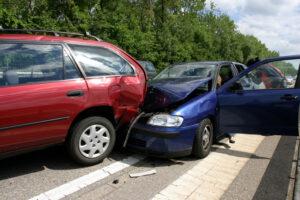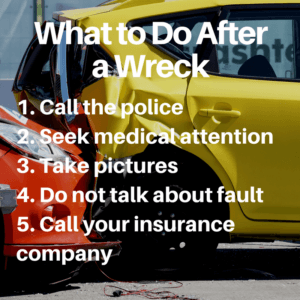If you’ve been in a car accident, you probably know all about the whirlwind of emotions and questions that immediately follow. You begin to assess the situation by asking a checklist of questions: “Am I hurt?” “Are my passengers hurt?” “Is the other driver hurt?” “Was it my fault?” “Was it theirs?” “What should I do now?”
Take a deep breath. You’ve just been through a frightening experience. You’re probably a bit shaken up at the very least, but your anxiety will only add to the problem. First and foremost, check with all involved parties to see if medical attention is required. After health concerns have been handled, it becomes your responsibility to document what happened and how it happened to ultimately determine who’s at fault.
The Information Exchange
Work With Chad and Sheila Today
After you’ve taken the time to address medical emergencies, be sure that you or someone with you exchanges and collects the necessary contact & insurance information with all involved parties, as well as witnesses, in order to follow up with your insurance company once you’ve left the scene. But, be cautious of what you say. Statements such as “I’m sorry, I never saw you” can be used against you as an admission of fault, so gather the information you need, don’t say much, and leave emotions out of it.
The Police Report
If a law enforcement officer is called to the scene, he/she will typically complete a police report, which insurance companies and personal injury attorneys will use to assess the situation, and ultimately determine fault or use to make a claim. For this reason, it is extremely important that information is documented as a true and accurate portrayal of what happened. The officer may also issue a citation to drivers who have violated traffic laws before the collision. This is extremely vital, for it can be used as evidence for determining fault.
The Role of Traffic Laws
Another important piece for determining fault in a car accident is your state’s traffic laws. For example, if your collision occurred within a school zone during the posted hours, and you suspect the other driver was speeding, knowing this traffic law and documenting it could make a huge difference in determining fault. Because Kentucky state traffic laws may differ from neighboring states, you’ll want to access the traffic laws in your area to see how it affects your situation. It is important to document details such as exact location and time of day while taking plenty of photos of involved vehicles and the surrounding scene.
The Insurance Adjuster
Insurance adjusters gather all of the available information to determine which party is at fault. This is where written descriptions/police reports, photos of the scene, and statements from witnesses come into play.
Need A Lawyer That Will Fight For your Rights?
As you can see, there are a number of factors and parties involved in the determination of fault in a car accident. A personal injury attorney can help guide you through that process. If you’re in Louisville or Bardstown, KY, and find yourself needing help after a car accident, give the attorneys at McCoy & Hiestand a call. We’ll review the details of your situation, and get you the help you deserve.
Let Us Put Our 58 Years Of Trial Experience Towards Your Case.


